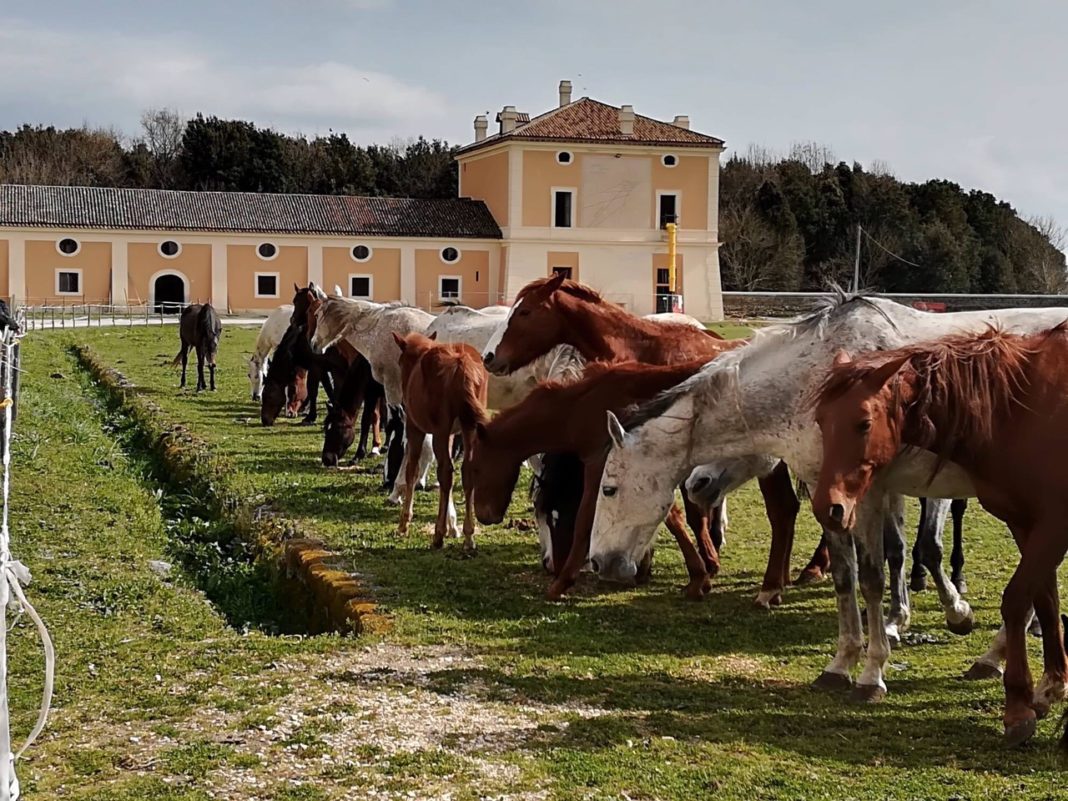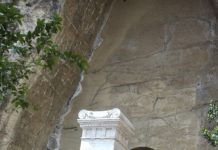Il real sito di Carditello si rifà il look. E torna agli antichi fasti con i nuovi lavori di restauro a Tempietto, abbeveratoio, gradonate dell’Ippodromo, colonne dei cancelli e fossato borbonico in tufo che circonda il Galoppatoio.
Intanto, sta per scadere anche il termine ultimo per presentare le offerte relative ai lavori di “Restauro e consolidamento presso il Real Sito di Carditello”.
In sede di verifica ispettiva da parte del Servizio veterinario dell’ASL di Caserta, è risultato necessario limitare gli spazi fruibili dai cavalli della Razza Governativa di Persano, presenti nella Reale Delizia borbonica. Cavalli e pony saranno trasferiti nei prossimi 4 mesi in armonia con il programma dei lavori di 180 giorni dall’affidamento. L’ampliamento degli spazi deriva deriva dall’esigenza di adeguarli al crescente numero di esemplari che si sono riprodotti proprio nel real sito (foto).
«Queste necessità – spiega Luigi Nicolais, presidente Fondazione Real Sito di Carditello – sono già previste nelle nostre attuali progettazioni, che diventeranno presto esecutive, non appena avranno ricevuto tutti i pareri degli Enti preposti. È interesse della Fondazione che cavalli e pony ritornino velocemente a Carditello, tanto che in tutte le procedure di gara viene considerata una premialità per gli operatori che eseguono gli interventi nel più breve tempo possibile, compatibili con la regola d’arte. Stiamo lavorando alacremente per rilanciare Carditello e l’intero territorio, continuando a garantire il massimo benessere agli equidi e, allo stesso tempo, avanzando rapidamente con il piano di restauro».
Il Real Sito di Carditello – voluto da Ferdinando IV di Borbone ed edificato intorno al 1787 da Francesco Collecini, collaboratore di Luigi Vanvitelli – ospita una palazzina reale dalle linee neoclassiche, ambienti destinati ad azienda agricola con cinque cortili ed un’area riservata alle corse dei cavalli, realizzata come un antico circo romano.
Ancora oggi è il più grande ippodromo al mondo inserito all’interno del perimetro di un edificio. La tenuta era destinata all’allevamento e alla selezione di cavalli di razza reale, oltre che alla produzione agricola e casearia. Qui era situata la Reale Industria della Pagliara delle Bufale, che ospitava un importante caseificio. Mirabile esempio dell’imprenditoria illuminata promossa dalla casa reale borbonica tra la fine del 1700 e la prima metà del 1800.
Carditello/ The Reggia gets a new look with further restoration work. More space for horses
The royal site of Carditello gets a new look. And it is returning to its former glory with new restoration works at Tempietto, drinking trough, Hippodrome steps, gate columns and Bourbon tuff moat surrounding the Galoppatoio.
Meanwhile, the deadline for submitting bids for “Restoration and Consolidation Works at the Royal Site of Carditello” is also about to expire.
During an inspection by the Caserta ASL Veterinary Service, it was found necessary to limit the spaces that can be used by horses of the Persano Governmental Breed, present in the Royal Bourbon Delight. Horses and ponies will be relocated over the next 4 months in keeping with the work schedule of 180 days from the entrustment. The expansion of the spaces stems from the need to adapt them to the growing number of specimens that have reproduced on the very real site.
“These needs,” explains Luigi Nicolais, president of the Real Sito di Carditello Foundation, “are already foreseen in our current designs, which will soon become executive, as soon as they have received all the opinions of the relevant authorities. It is in the Foundation’s interest that horses and ponies return quickly to Carditello, so much so that in all bidding procedures a bonus is considered for operators who carry out interventions in the shortest possible time, compatible with the rule of art. We are working hard to revitalize Carditello and the entire area, continuing to ensure the maximum welfare of the equines and, at the same time, moving forward quickly with the restoration plan.”
The Royal Site of Carditello – commissioned by Ferdinand IV of Bourbon and built around 1787 by Francesco Collecini, a collaborator of Luigi Vanvitelli – houses a royal palace with neoclassical lines, rooms used as a farm with five courtyards and an area reserved for horse racing, made like an ancient Roman circus.
Even today it is the largest hippodrome in the world inserted within the perimeter of a building. The estate was used for the breeding and selection of royal horses, as well as for agricultural and dairy production. Here was located the Royal Buffalo Pagliara Industry, which housed an important dairy. A wonderful example of the enlightened entrepreneurship promoted by the Bourbon royal house in the late 1700s and the first half of the 1800s.










